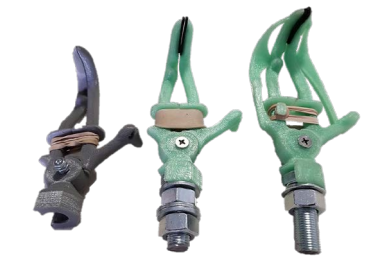3D Printed Prosthetics and Simulator Could Lead to Optimized Devices
In a thesis entitled “Optimizing 3D Printed Prosthetic Hand and Simulator,” author Stephen Estelle discusses an investigation of the use of an upper extremity prosthetic simulator for those who are not missing limbs – for example, for schools or research facilities. No standardized prosthetic simulator exists for these facilities, Estelle says. He discusses using 3D printing to modify the existing Hosmer 5X Prosthetic Hook by adding newly designed trusses.
“To continue to raise prosthesis satisfaction, the professionals who are assisting the users with the prosthetics need to be able test, redesign, and optimize prosthetics for their clients,” Estelle states. “If issues arise for amputees, such as profuse sweating, and the working professionals had the most efficient technology, then they could bring new changes to the prosthetic as swiftly as possible. This is imperative so that the necessary changes to the devices can be made promptly, accurately, and correctly.”
Priorities for prosthetic users, according to a survey, include:
- increased functionality
- natural interaction with the environment
- reduced weight
- higher grasping speed and forces
- low noise
- better cosmetic appearance
Estelle 3D scanned an existing Hosmer 5X Prosthetic Hook and then used the scans to create a 3D model from which he 3D printed several redesigned prototypes, aiming to create a prosthetic that would work well with a simulator.
“The trusses on the side of the newly designed model of the Hosmer 5X Hook were inspired by bridges and the truss system used for them,” he explains. “The purpose of the truss is to reduce any form of displacement of the prosthetic hook, as well to disperse the stress and strain that the prosthetic encounters throughout the device more evenly. The truss was designed to reduce any bending or twisting moment due to a force on the tip of the hook. By doing so, the prosthetic is able to withstand higher forces and reduce the buildup of maximum stress in certain locations.”
Estelle also designed a prosthetic simulator that could be attached to a user’s arm, and a small sample population of volunteers participated in a study using the simulator. The prosthetics and simulators were 3D printed on the Stratasys F270 and the MakerBot Replicator in PLA material.
“The two simulator positions were in front of the hand and below the hand, while the two different prosthetics were the original stainless-steel
Hosmer 5X Prosthetic Hook and a PLA 3D printed replica,” Estelle continues. “The two prosthetics weighed 5.5oz and 2.5oz respectively, and the only difference being the material and the additional M12-1.25 hex screw connected to the 3D printed replica.”
The four testing groups were:
- in front of the hand with the original prosthetic
- below the hand with the original prosthetic
- in front of the hand with the replica
- below the hand with the replica
The participants were required to perform a “Box and Blocks test” to measure manual dexterity using the prosthetics. A box with a partition in the middle was placed in front of each participant, with blocks on one side and an empty space on the other. The participants were required to move as many blocks as possible from one side to the other in one minute.
The participants wearing the 3D printed prosthetic did slightly better with the test than those wearing the original, possibly because the 3D printed prosthetic was more lightweight. The bottom prosthetic position also may have allowed the wearer to reach the blocks more quickly.
“These preliminary tests that were done in this study not only gave us insight on the prosthetic simulator position and the material choice for the prosthetic, it also gave us a better understanding on performing more accurate and reliable tests as we move forward and continue with this study,” says Estelle. “In the upcoming trials, the addition of a tracking system will be added to help us understand the body movements that go along with the simulator positions and the prosthetics being used.”
Discuss this and other 3D printing topics at 3DPrintBoard.com or share your thoughts below.
Subscribe to Our Email Newsletter
Stay up-to-date on all the latest news from the 3D printing industry and receive information and offers from third party vendors.
Print Services
You May Also Like
New Business: Temporary, Migratory, & Modular 3D Printed Architecture
If we look at potentially emerging 3D printing businesses, then architecture has not been fully explored. Yes, there is a lot of house 3D printing going on worldwide. From deployable...
3D Printing News Briefs, April 19, 2025: Material Extrusion Standard, Metal Powder, & More
In today’s 3D Printing News Briefs, we’re covering a proposed standard for material extrusion, before moving on to business and metal powder. We’ll end with a commercial store’s robotic 3D...
Japan Unveils World’s First 3D Printed Train Station
Japan is now home to what we believe is the world’s first train station built with 3D printing technology. Located in Arida City, just south of Osaka, the new Hatsushima...
restor3d Raises $38M to Expand 3D Printed Orthopedic Implants
Backed by $38 million in new funding, restor3d is pushing ahead with the launch of four personalized implant lines, set to roll out in 2025 and 2026. This latest venture...




























